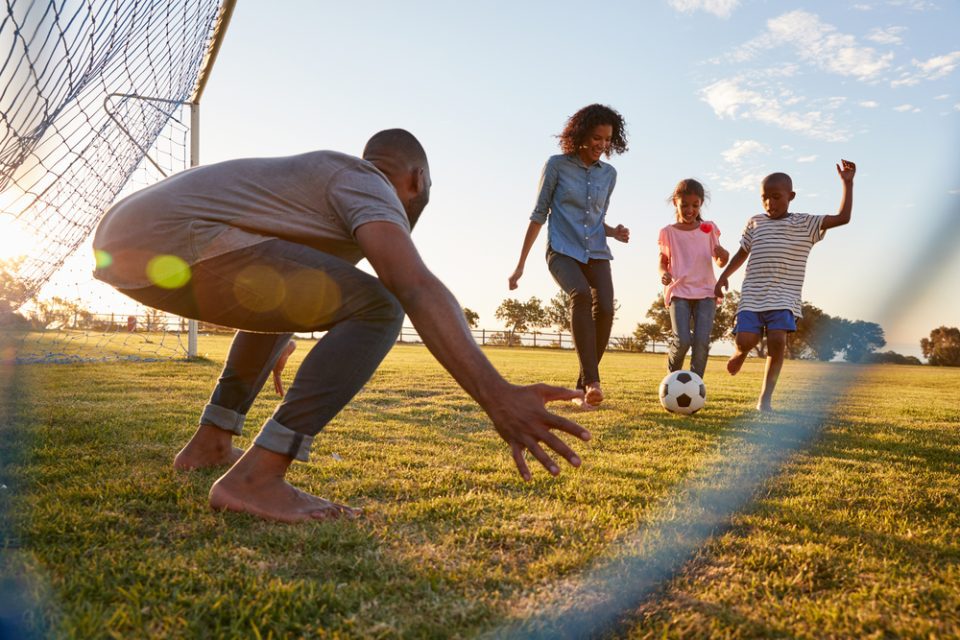How childhood sports participation influences adult physical development and capabilities

The foundation of lifelong fitness
The impact of childhood sports extends far beyond trophies and team photos, leaving lasting effects that shape adult physical development and athletic capabilities. From muscle development to bone density, early athletic participation provides a solid foundation for lifelong fitness. Research shows that the benefits of youth sports go beyond just fitness, impacting various physiological aspects of the body in ways that become evident as people age.
The science of developmental athletics
Key physiological processes triggered by early sports participation
Youth sports participation activates several key processes in the body that contribute to long-term physical development. These include:
- Neural pathway development, which enhances coordination and movement efficiency.
- Bone density enhancement, which can help reduce the risk of osteoporosis later in life.
- Muscle fiber adaptation, which improves strength and endurance.
- Motor pattern establishment, leading to better movement control and efficiency.
- Cardiovascular system development, improving heart and lung capacity.
Muscle memory: beyond basic retention
How muscle memory impacts athletic abilities
The concept of muscle memory involves more than just recalling physical actions. It encompasses the body’s ability to retain complex movement patterns over time, allowing for greater coordination and faster learning of new skills. Youth sports help establish neural pathways that enhance this retention, enabling individuals to perform movements more efficiently, even after years of inactivity. This ability to quickly relearn skills is particularly evident in former athletes who return to their sport after a hiatus.
Developmental timing and physical adaptation
How early athletic participation shapes growth
The timing of athletic involvement during childhood is crucial for optimal physical development. Key adaptations that occur during this time include:
- Growth plate stimulation, which helps in proper bone development.
- Hormone regulation, which influences muscle growth and fat distribution.
- Muscle fiber development, contributing to strength and endurance.
- Bone density enhancement, which reduces the risk of fractures and supports overall skeletal health.
- Cardiovascular efficiency, which helps in sustaining longer, more intense physical activity.
Long-term physiological benefits
Enduring advantages from childhood sports participation
Engaging in sports during childhood provides long-term benefits that last well into adulthood, including:
- Enhanced bone mineral density, promoting strong bones throughout life.
- Improved cardiovascular capacity, leading to better endurance and heart health.
- Better motor control, which contributes to agility and coordination.
- Advanced proprioception, or the awareness of one’s body in space, aiding in balance and movement precision.
- Increased metabolic efficiency, which helps maintain a healthy weight and efficient energy use.
Impact on adult body composition
How early sports shape body composition later in life
The influence of childhood sports goes beyond just muscle strength. It impacts several key aspects of body composition, such as:
- Muscle fiber type distribution, which can determine an individual’s strength and endurance capacity.
- Fat distribution patterns, which are influenced by the type of sport played during childhood.
- Metabolic rate regulation, which helps manage energy expenditure.
- Hormonal balance, which influences fat storage and muscle growth.
- Recovery capacity, which affects how quickly the body heals and adapts to physical exertion.
The role of specific sports
How different sports impact physical development
Different types of sports create unique developmental patterns based on their physical demands:
- Endurance sports: These sports, such as long-distance running or cycling, promote cardiovascular efficiency and develop slow-twitch muscle fibers, which improve aerobic capacity.
- Power sports: Sports like sprinting or weightlifting focus on fast-twitch muscle fibers, helping develop explosive strength and neuromuscular recruitment for rapid, powerful movements.
- Technical sports: Sports such as gymnastics or swimming hone fine motor control, balance, and proprioception, fostering coordination and body awareness.
Starting late: adult adaptation potential
Can adults still improve their physical fitness?
It’s never too late to start building fitness, even for those who did not participate in sports as children. The body remains highly adaptable throughout life, with neuroplasticity continuing to allow for muscle development, improved bone density, and better coordination. Although adults may face more challenges compared to those who began sports at a younger age, achieving significant fitness goals remains possible through consistent effort and dedication.
Practical applications for adults
How adults can optimize fitness gains
To make the most of their physical potential, adults can adopt these strategies:
- Assessment and planning: Begin by evaluating your current fitness level, setting realistic goals, and creating a structured progression plan. Monitor progress and adjust as necessary.
- Training fundamentals: Focus on proper form to prevent injury, progress gradually to avoid overexertion, and remain consistent with your workout routine. Incorporate recovery into your schedule.
- Nutrition and recovery: Ensure adequate protein intake, stay properly hydrated, get quality sleep, and manage stress. Implement recovery protocols, such as stretching and foam rolling, to enhance muscle repair.
- Injury prevention: Warm up before exercise, focus on proper technique, and gradually increase load to minimize risk. Regularly perform maintenance exercises to maintain flexibility and strength.
Conclusion
The impact of childhood sports on lifelong fitness
The influence of childhood sports participation on adult physical development is profound, shaping everything from muscle memory to bone density. However, even for those who did not have an athletic background, the body is capable of remarkable adaptation. With the right approach to training, recovery, and nutrition, anyone can achieve significant fitness improvements. Understanding the long-term benefits of youth sports offers valuable insights into how to optimize fitness and maintain a healthy, active lifestyle throughout life.














